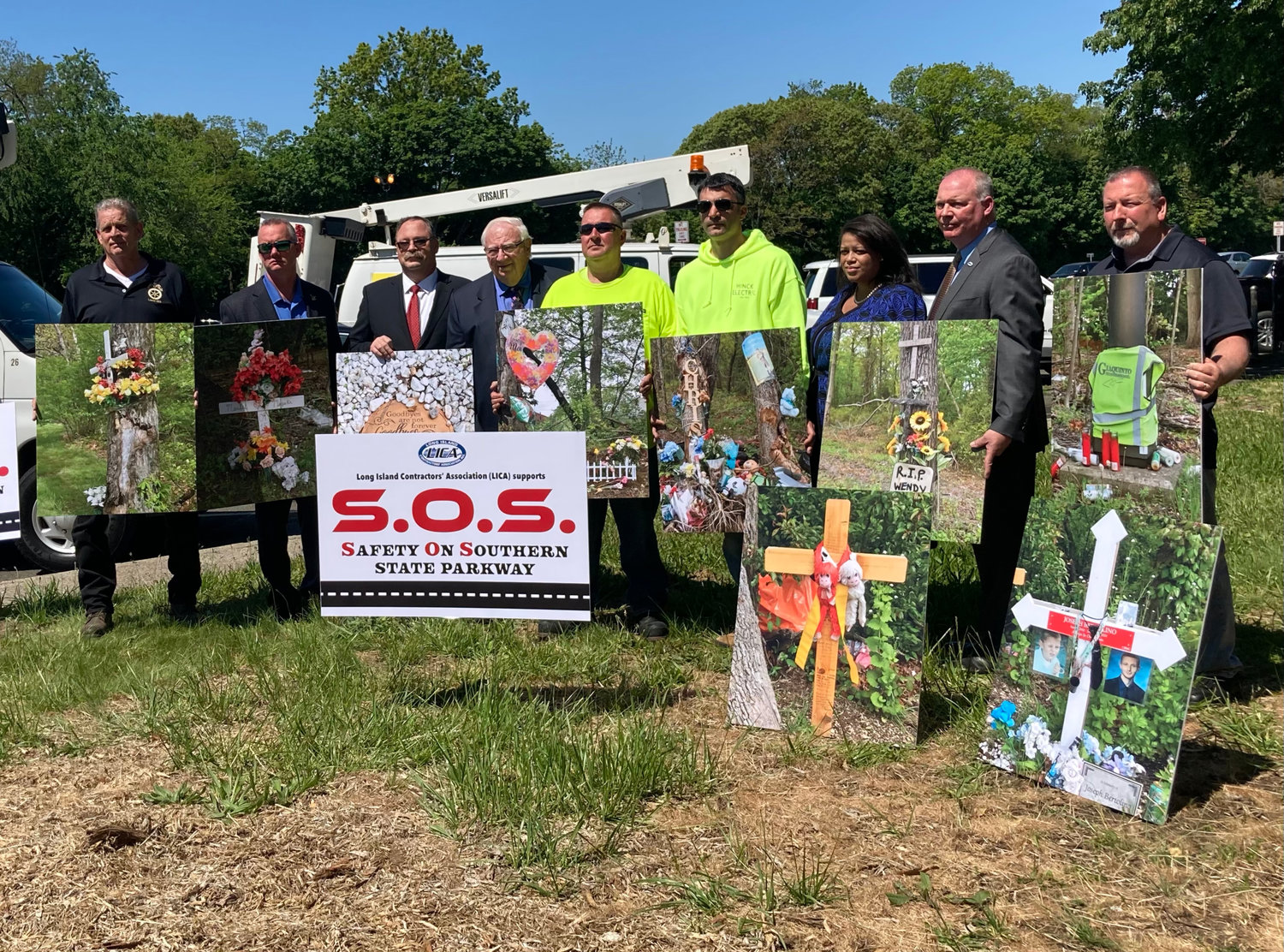Bill would improve infrastructure, technology on Southern State Parkway
With a 10-mile stretch of highway referred to as “Blood Alley,” between Exit 17 in Malverne and Exit 32 in Farmingdale, the Southern State Parkway is known as one of the most dangerous thoroughfares in Nassau County. State legislators recently proposed a bill aimed at increasing safety measures and helping reduce crashes, and deaths.
One of the most treacherous sections of the parkway is near Exit 18, at Eagle Avenue. According to Rosalie Norton, an executive board member of the West Hempstead Community Support Association, accidents have gotten worse in recent years.
“My husband and I have used the Southern State for years, but as the population grew, that area has progressively become more dangerous,” said Norton, who has lived in West Hempstead for more than 50 years.
In the most notable accident in recent years, an eastbound commercial charter bus slammed into the Eagle Avenue overpass at Exit 18 in April 2018. Six people were seriously injured and were rushed to area hospitals, and three dozen suffered minor injuries. At a height of just 7 feet 7 inches, the Eagle Avenue bridge has one of the lowest clearances of any structure on a Long Island parkway, and is hit by oversized trucks an average of three times a year, according to the state Department of Transportation.
The legislation, dubbed the S.O.S. Safety on the Southern State bill, was introduced by State Sen. John Brooks, a Democrat from Seaford, and Assemblywoman Michaelle Solages, a Democrat from Elmont. The legislation seeks to designate a portion of the parkway as a “highway safety corridor.” The lawmakers are looking to add signage, increase law enforcement presence and double traffic violation fines to curtail unsafe driving.
Elected officials are also exploring the possibility of introducing new technologies that could be used along the most dangerous parts of the road, which runs from the Cross Island interchange, on the Queens-Nassau border, to the Sagtikos State Parkway, in Suffolk County. They are looking to collaborate with the Department of Transportation and law enforcement to make infrastructure changes and identify technology that can be used to reduce accidents. The DOT conducted a study of the parkway’s safety issues, but the complete results have not yet been shared with the legislators.
“We must adapt to new times and build the infrastructure to make the roadway safer,” Solages said, noting that the Southern State Parkway was constructed at a time when cars were slower and heavier. Construction began on the parkway nearly a century ago, in 1925, and was completed in 1927.
The parkway has remained largely unchanged since then. The configuration of exit and entrance ramps, and their corresponding signage, has made the road one of the deadliest highways on Long Island. A 2016 study by the DOT found that in one five-year span, over 10,500 accidents occurred on the Southern State, over 3,000 of which involved injury, and 32 were fatal.
While the lawmakers said that new infrastructure must be added to improve road safety, studies have revealed that the real problem may be human behavior, they say.
“This bill is starting to look at what might be the real problem: how people are operating their vehicles on this parkway,” Brooks said. “Most of what we see is caused by human behavior.” He referred to drivers who might enter the parkway in the wrong direction, drive at excessive speed or cut in and out of lanes.
Solages said that too many people are dying on the parkway, and lawmakers cannot stay silent. “We have the facts,” she said. “We have the information in regards to how we could make the roadway safer, and we’re ready to implement it here — it’s just smart. We cannot see another death. We cannot see another injury here and . . . say, ‘Oh well, it’s human error.’ We have the ability to save lives.”
Solages said that sending the message that the Southern State is a highway safety corridor would improve driver awareness of the road’s potential dangers.
“We’re not going away,” Brooks said. “We’re going to keep this up. And if we have to, we’ll introduce much stronger legislation. We have to accept the responsibility of fixing this parkway, whatever it’s going to take. . . . Far too many families across Long Island have lost loved ones on this parkway.”
According to Marc Herbst, executive director of the Long Island Contractors’ Association, which announced its support for the bill, similar programs have been implemented in other states, including New Jersey, Pennsylvania and Arizona. But if the bill were to become law, it would be the first program of its kind in New York.
“This being the most dangerous road is opportune to do a pilot program in New York state,” Herbst said, adding that local labor unions would be part of the solution to help to save lives. “We won’t stop until we curb the carnage that takes place upon this highway and others . . . We don’t want to build more memorials. It’s time to stop the carnage.”

 44.0°,
Mostly Cloudy
44.0°,
Mostly Cloudy 




